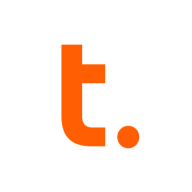

Microsoft SQL Server Integration Services and Teradata compete in the data integration solutions category. SSIS seems to have the upper hand in terms of integration with Microsoft products and affordability, while Teradata is noted for its performance and analytics capabilities.
Features: Microsoft SSIS is appreciated for its ease of use, particularly for users new to ETL processes. It provides extensive ETL capabilities, Script task integration, and seamless connectivity with various data sources. It integrates well with Microsoft products and supports cloud deployment via Data Factory. Teradata is recognized for its performance, shared-nothing architecture, and advanced analytics, enabling massive parallel processing for handling large data volumes effectively.
Room for Improvement: SSIS users report challenges with error logging, connectivity to non-Microsoft BI tools, scalability, and UI responsiveness. Teradata's areas for improvement include the need for enhanced cloud integration and better support for unstructured data. The cost and complexity of Teradata's deployment are also noted as points of concern.
Ease of Deployment and Customer Service: SSIS supports multiple deployment platforms, catering to organizations invested in Microsoft ecosystems, though support experiences vary. Teradata provides deployment flexibility across on-premises, private, and public clouds, with customer feedback highlighting high costs and variability in technical support.
Pricing and ROI: SSIS offers a cost-effective solution as part of the SQL Server package, beneficial for those using Microsoft products, ensuring good ROI without extra fees. Teradata, with its high pricing, is suited for large organizations needing robust data warehousing. However, its performance may justify the cost for large projects, contrasting with SSIS's affordability for smaller businesses.
The tool has made us tremendously more efficient and saved us a significant amount of money.
Using SSIS has proven cost-effective as there are no additional fees outside the SQL Server license, and it significantly enhances data management efficiency.
We have realized a return on investment, with a reduction of staff from 27 to eight, and our current return on investment is approximately 14%.
The first line of support needs to be more knowledgeable.
The customer support for Teradata has been great.
Customer support is very good, rated eight out of ten under our essential agreement.
The technical support from Teradata is quite advanced.
This expansion can occur without incurring downtime or taking systems offline.
Scalability is complex as you need to purchase a license and coordinate with Teradata for additional disk space and CPU.
Teradata's scalability is great; it's been awesome.
It processes large volumes of data quickly.
I find the stability to be almost a ten out of ten.
The workload management and software maturity provide a reliable system.
Within the South African context, if you are getting your enterprise agreement from First Technology, they don't provide support.
The logging capabilities could be improved, particularly for error logging.
SSIS has a difficult learning curve when dealing with complex transformations.
If Teradata could provide a list of certified experts, that would be fantastic.
Unlike SQL and Oracle, which have in-built replication capabilities, we don't have similar functionality with Teradata.
Utilizing SSIS involves no extra charges beyond the SQL Server license.
It was included in our licensing for SQL server, and our licensing for SQL server was extremely cheap, making it a very good price point for us.
Initially, it may seem expensive compared to similar cloud databases, however, it offers significant value in performance, stability, and overall output once in use.
Teradata is much more expensive than SQL, which is well-performed and cheaper.
We spent roughly $295,000 on setup costs.
It is a very robust tool that can work with many data sources, and its main strength is that it is extremely easy to use.
One of the best aspects of SSIS is that it is built into Microsoft SQL Server, so there are no additional costs involved.
The challenge lies in Microsoft withdrawing a lot of the qualifications and watering down its emphasis, leading to a perception that this is supposed to be an elite product.
It has resulted in better performance improvement within our team as we now cover nine business units instead of 18, thanks to the data performance, which has increased data visibility and helped the enterprise achieve a higher rate of internal return on financials.
The data mover is valuable over the last two years as it allows us to achieve data replication to our disaster recovery systems.
| Product | Market Share (%) |
|---|---|
| SSIS | 5.7% |
| Teradata | 0.8% |
| Other | 93.5% |


| Company Size | Count |
|---|---|
| Small Business | 26 |
| Midsize Enterprise | 19 |
| Large Enterprise | 57 |
| Company Size | Count |
|---|---|
| Small Business | 26 |
| Midsize Enterprise | 12 |
| Large Enterprise | 49 |
SSIS is a versatile tool for data integration tasks like ETL processes, data migration, and real-time data processing. Users appreciate its ease of use, data transformation tools, scheduling capabilities, and extensive connectivity options. It enhances productivity and efficiency within organizations by streamlining data-related processes and improving data quality and consistency.
Teradata is a powerful tool for handling substantial data volumes with its parallel processing architecture, supporting both cloud and on-premise environments efficiently. It offers impressive capabilities for fast query processing, data integration, and real-time reporting, making it suitable for diverse industrial applications.
Known for its robust parallel processing capabilities, Teradata effectively manages large datasets and provides adaptable deployment across cloud and on-premise setups. It enhances performance and scalability with features like advanced query tuning, workload management, and strong security. Users appreciate its ease of use and automation features which support real-time data reporting. The optimizer and intelligent partitioning help improve query speed and efficiency, while multi-temperature data management optimizes data handling.
What are the key features of Teradata?In the finance, retail, and government sectors, Teradata is employed for data warehousing, business intelligence, and analytical processing. It handles vast datasets for activities like customer behavior modeling and enterprise data integration. Supporting efficient reporting and analytics, Teradata enhances data storage and processing, whether deployed on-premise or on cloud platforms.
We monitor all Data Integration reviews to prevent fraudulent reviews and keep review quality high. We do not post reviews by company employees or direct competitors. We validate each review for authenticity via cross-reference with LinkedIn, and personal follow-up with the reviewer when necessary.